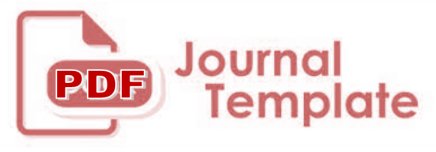History and Development of the Education Curriculum before the Reformation
DOI:
https://doi.org/10.61166/bgn.v2i1.43Keywords:
History, Curriculum Development, Education before ReformAbstract
The curriculum is the most important element in developing educational performance, because basically education that does not adhere to the curriculum will be difficult to systematize in its implementation. The curriculum before the reformation has undergone several changes including starting from the old order in 1947 where the curriculum was known as Rantjana Pelajaran then followed in 1952, so that the curriculum changed to Rentjana Terurai. Then the third change in 1964, this curriculum was named the education plan which focused on moral development, emotional intelligence, skills and physical (pancawardhana). And different during the new order period, during this period the curriculum underwent changes starting in 1968, this curriculum was named the 1968 curriculum from the results of the evaluation of pancawardhana which was refined into panca jiwa pancasila, then the second change began in 1975 which focused on the development of instructional systems (PPSI). The third turn was in 1984 and was named the 1984 curriculum which focused on skill development with a model called CBSA (how to learn active students), while the fourth turn was in 1994 which is known as the 1994 curriculum. In essence, all curricula that are applied must undergo changes, which can thus adapt to the development and needs of society in the future.
Downloads
References
Alhamuddin. “Sejarah Kurikulum di Indonesia (Studi Analisis Kebijakan Pengembangan Kurikulum).” Nur El-Islam, vol.Volume 1, Nomor 2 (2019).
Abdul Fattah Nasution, Hasita Dwi Putri, Nurtika Syahputri, Laila Parhani Hasibuan, & Azaman Andra. (2024). The Impact of Changes in the Independent Curriculum on Learning in Schools. COMPETITIVE: Journal of Education, 3(1), 21–27. https://doi.org/10.58355/competitive.v3i1.39
Anati Rahila, & Khozin. (2024). Holistic Curriculum Development in Islamic Religious Education Institutions in Primary Schools or Madrasah Ibtidaiyah. DIROSAT: Journal of Education, Social Sciences & Humanities, 2(2), 124–129. https://doi.org/10.58355/dirosat.v2i2.67
Anwar, saiful. “Kebijakan Pemerintah terhadap Pendidikan Islam di Indonesia (Zaman Orde baru dan Reformasi).” Al-I’tibar, vol.6 No.2 (2020).
Ata Gusman, Burhanudin. “Studi Kebijakan Pendidikan Agama Islam pada Orde Lama, Orde Baru dan Reformasi.” Saliha: Jurnal Pendidikan dan Agama Islam, vol.5 No.2 (2 Juli 2022).
Batubara, Ulfa Nury. “Perkembangan Pembelajaran Sejarah Pasca Kemerdekaan-Reformasi.” vol.8 No.1 (Januari 2019).
Farida Ummami, & Khozin. (2024). Sociology as a Basis for Curriculum Development for Islamic Religious Education. HISTORICAL: Journal of History and Social Sciences, 3(1), 62–69. https://doi.org/10.58355/historical.v3i1.103
Insani, Farah Dina. “SEJARAH PERKEMBANGAN KURIKULUM DI INDONESIA SEJAK AWAL KEMERDEKAAN HINGGA SAAT INI” (2019).
Insani, Farah Dina. “Sejarah Perkembangan Kurikulum di Indonesia sejak awal Kemerdekaan hingga saat ini.” As-Salam I, vol.VIII No.1 (Januari-Juli2019).
M. Wahib MH, Slamet Abadi, Khalifaturrohmah, Aang Abdullah Zein and Tri Novia (2022) “Studi Historis Perkembangan Sistem Pendidikan Di Indonesia”, al-Afkar, Journal For Islamic Studies, 5(4), pp. 83–90. doi: 10.31943/afkarjournal.v5i4.336.
Nova Junaeni. (2023). The Concept Of Reconstructionalism Education In The Preparation Of The Educational Curriculum. ATTAQWA: Jurnal Pendidikan Islam Dan Anak Usia Dini, 2(2), 95–102. https://doi.org/10.58355/attaqwa.v2i2.45
Wibowo, Bayu Ananto. “Kajian Kebijakan Kurikulum Indonesia 1947-2013.” vol.03, no. 04 (2021).
Downloads
Published
How to Cite
Issue
Section
License
Copyright (c) 2024 Bunaya, Firman Ashari

This work is licensed under a Creative Commons Attribution 4.0 International License.










